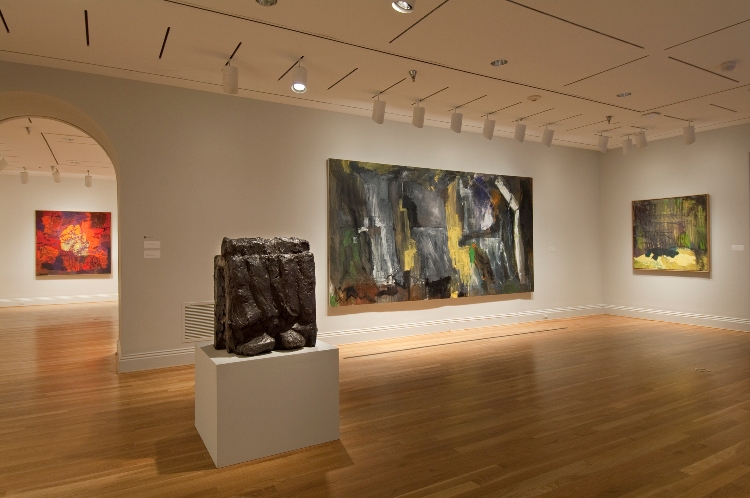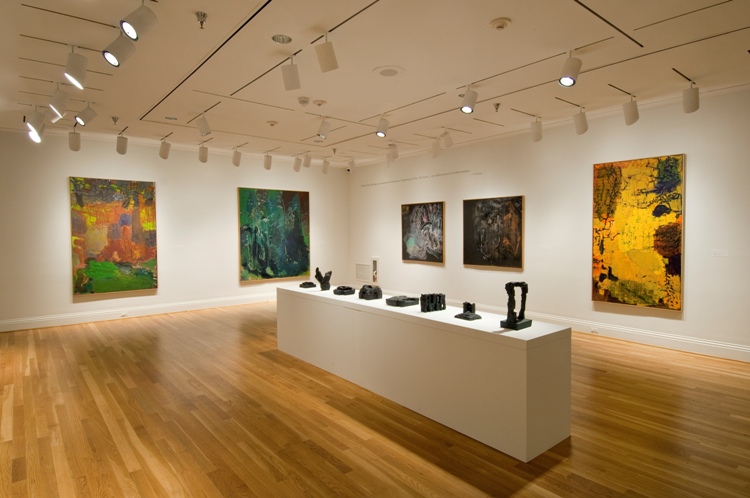Picasso has been quoted as saying, “Good artists copy, great artists steal.” Per Kirkeby has impishly admitted that he “steals” whatever catches his eye. He may be visiting a museum or leafing through a book, and if something intrigues, gives him pause, he’ll make a sketch of it, draw it into his memory, perhaps for future reference. He states, “I need something to paint from. I cannot paint out of the blue sky. . . . I cannot paint nothing.” He needs this seed around which his molten paintings can crystallize. As Karen and I have written previously, the possible roots of Kirkeby’s paintings can be fun to trace.

View upon entering Per Kirkeby: Paintings and Sculpture at the Phillips with Kirkeby’s monumental painting Erdbeben (Earthquake) at center. Photo: Lee Stalsworth
This process makes Kirkeby’s paintings seem both new and strangely familiar. His sublime Erdbeben (Earthquake) of 1983–the painting that greets you when you enter the current Phillips exhibition–seems a distant, modern cousin of Thomas Cole’s Destruction (1836), from his Course of Empire series at the New-York Historical Society. In Erdbeben (Earthquake), a broken, falling fluted column on the right echos the lines of the headless white marble statue in Cole’s work; both loom in the foreground to give depth. The shape of a white triangular building sits atop a horizontal slab of dark water, and behind it a black, rocky crag. From the sides, dark clouds encroach the view, leaving a small distant horizon line. Destruction is almost sunny and bright, all the better to see the details. Kirkeby’s dramatic darkness, by contrast, is more in line with any of a number of 19th-century romantic paintings, for example, John Martin’s The Great Day of His Wrath (1851-3).
Kirkeby tells a story of going to the National Gallery of Denmark when he was about 15 and being intrigued by a painting by August Strindberg, likely Storm in the Skerries. “The Flying Dutchman” (1892). Strindberg was a Swedish playwright and novelist. Astoundingly prolific, whenever he suffered from writer’s block and severe psychological stress, he would paint instead. One such period in Strindberg’s life is known as the “inferno crisis”; in 1897 his autobiographical novel Inferno was published. Interestingly, in the 1990s Kirkeby named one of his series of paintings Inferno, including the Phillips’s own Inferno V (1992). Perhaps this strange stormy seascape by Strindberg planted itself as a seed in the flux of the young Kirkeby’s subconscious, to silently grow and finally crystallize nearly 30 years later.
Ianthe Gergel, Museum Assistant

